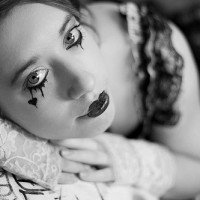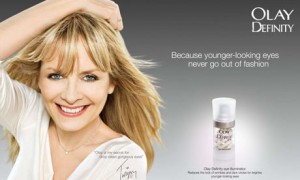
High horses. I reckon that we’ve all got at least one stabled somewhere. I know that I have a couple that I take out for a gallop every now and again. But there was one issue over which I never really held such strident opinions, and for people who know me, it probably surprised them. It was about digitally manipulating images of models. There are plenty of groups with louder voices than mine to shout about the negative effects that flattening models’ tummies has on the self-esteem and body-image of young women (and in fact, of young men) without me wading in.
And what exactly would I be able to say to a group of people such as Real Women and their ‘Take Action Against Airbrushing’ campaign? They want to implement a system whereby any image of a model that has been digitally altered should bear a ‘kite mark’ indicating this. Would they want to listen to the moderate views of someone who has seen other photographers brush out spots or blemishes on her chin and is happy about this, giggles at Photoshop Disasters, and regularly bats away the statement: ‘Wow! Aren’t you thin!’? (Would anyone ever say: ‘My! You’re fat, aren’t you?’) I get the feeling I’m their problem, not their solution.

The Real Women group had this image banned on account of false advertising. The skin around Twiggy's eyes was made to look better than it is, using photoshoppery. Bit of a problem for an eye cream.
But here I am, having a rant on a Monday.
So what made me change my mind? It was a 19 year old pop star whom I saw on TV on Saturday evening. Her name is Pixie Lott. Her makeup left me temporarily speechless. Then I managed to find my voice. Then my friend had to put on the film we were supposed to be watching to stop me from losing my voice.
She didn’t look real. Her skin tone was so artificially translucent and even that she resembled a Barbie Doll. Who needs to brush out spots and blemishes when you can apply foundation an inch thick? I’m serious. We can introduce a system that flags up images that have been digitally altered, but what about the actual presentation of the model? Add another layer of makeup and request that she lose another kilo before her next photoshoot and we’re still conveying a manipulated, idealised image. We’ve not solved the problem. If anything, we’ve just made it worse because the unreality is being given the kite mark seal of approval.
The young people whom it was intended to protect from unrealistic, potentially unhealthy images have just been exposed to something definitely more insidious.
Before anyone wants to hold a stiletto to my throat, this doesn’t mean that I condone making models’ arms thinner and their boobs bigger with the use of a computer screen; what it means is that we have to be more realistic about why people choose to manipulate images, and what the effects of this are. A kite mark isn’t going to help.
You see, image manipulation isn’t new. The Roman emperor Augustus was an aficionado when it came to conveying a message and projecting an ideal through images. Henry VIII threw an enormous hissy fit when Anne of Cleves stepped off the boat to marry him and he realised that she looked nothing like the portrait he’d seen of her, painted by Hans Holbein. I’m pleased I wasn’t there. He ranted and raved and allegedly called the poor woman a ‘fat Flanders mare.’ Oliver Cromwell insisted that his official portrait show him ‘warts and all,’ knowing that they would be carefully omitted otherwise.
There’s a whole package of images out there that are manipulated in different ways, for different reasons, with myriad different consequences. Give people the tools to recognise this and analyse this for themselves. People seem to be far too willing to reduce difficult decisions to the lowest common denominator because this makes dealing with them easier. How about giving a difficult problem the difficult solution it deserves? In the long term, the results will be far more beneficial.
Photography is an art-form. Don’t let’s forget that. As photographers, we know that shooting in black and white will give a far more even skin tone in portraits. I suppose that we could always shoot in colour, instead. I’ll stop photographing someone I love very much only from her right side so that we can always see the extensive scarring on her left cheek. That’ll do wonders for her self-esteem, I’m sure. Maybe we should stop using gels and reflectors, too. Lighting isn’t important in photography, is it?
Teach young people how powerful images are; teach young people how images have been used across time; teach young people to paint, to draw, and to take photos; teach young people to recognise and to create their own beautiful things; teach young people to think for themselves. Stop applying sticking plasters to problems that have far deeper roots. Or, if you want another image-related analogy, stop powdering more arsenic and lead over your arsenic and lead-eroded skin.







